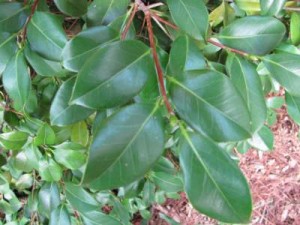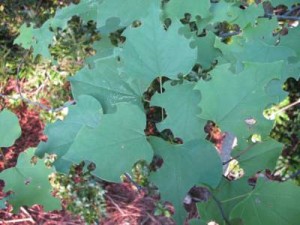It’s easy to attract beneficial insects to your landscape, just select the right trees, flowers, and shrubs. If you’re like most home owners, you’ve never considered the importance of insect diversity in your back yard. Some people may even think they don’t want any insects in their landscape. Unfortunately, bugs and other insects have an undeserved reputation as pests. Pest control companies can pile up the profits if they can convince you that every creature with six or more legs needs to be poisoned, gassed, or otherwise exterminated. When many people think of insects, they think of biting mosquitoes, stinging wasps, cockroaches, or perhaps a parade of ants in the kitchen pantry. But contrary to these common images, most insects in a natural or well-designed landscape are not only beneficial, but necessary.
The Right Plants Are Essential
Daily, our landscape plants are busy converting solar energy into plant tissue and carbohydrates. Solar powered plants provide the food and nutrition in the form of leaves, fruits, and nectar to feed a wide variety of adult beetles, bugs, and butterflies. Their less visible larvae and nymphs are also dependent on the ability of plants to harness the sun’s energy.
Below are two pictures of camellia and eastern redbud in my landscape. What do you immediately notice about these leaves?

Camellia with leaves intact

Eastern redbud with slight foliar damage from beneficial insects, leafcutter bees
That’s right! The camellia leaves have no noticeable insect damage and the redbud leaves have semicircular notches cut by nonaggressive leafcutting bees. Damage to the redbud is minor and hardly visible from twenty feet, but the benefit to the bee is critical. The leaf fragments are not used as food in this case, but as building materials to create nest cells. Many leafcutter bees are also important pollinators.
Why do our local insects make use of some plants for food and building materials, but not other plants? The simple answer to this question is to imagine the plant community inhabiting your property 500 years ago. Before the Columbian Exchange all of the plants on your property would have been native to North America. Redbud was growing in the eastern deciduous forest in 1492, camellia — a plant native to Asia — was not.
Plants devise ways with chemical toxins or thorns to protect their valuable energy storehouses from plant predators. Our local native insect community evolved side by side with our local native plant community, and many insect specialists have the necessary enzymes to detoxify a particular plant’s leaf chemistry. Generally, only a few insect species are able to feed on a particular host species, while specialized plant chemistry excludes many thousands of other insects from foraging the same plant.
According to Dr. Douglas Tallamy, professor and chair of the Department of Entomology and Wildlife Ecology at the University of Delaware, “Insect specialists do not have the option of eating any plant in the neighborhood. Nor do they have the option of quickly adapting to alien plants that have replaced their native hosts. Evolution simply does not work that fast. If an insect’s hosts are not present, it won’t be either.” If we want beneficial insects we should plant native trees.
Beneficial Insects Control Pests and Feed Birds
Natural landscapes, or healthy well-designed landscapes have a wide variety of beneficial insects that form critical and important strands in an intricate food web. Almost all of our native bird species need high protein insects to maintain their high metabolism and energetic lifestyles. They depend critically on these insects during the breeding season to feed their rapidly growing families.
Additionally, lady beetles, lacewings, and hover flies control outbreaks of insects that can cause severe plant damage if pest populations reproduce rapidly in the absence of their natural insect predators.
If beneficial insects aren’t present, the birds that feed on them will also disappear, and additionally, pest populations can explode and cause severe damage to ornamentals. The solution is to use more native plants and less aliens.
Native Trees to Plant in Hampton Roads
My recommendations for shade trees to plant in Hampton Roads for attracting beneficial insects would include: American beech, white oak, willow oak, black oak, southern red oak, sweetgum, yellow-poplar, red maple, river birch, sycamore, pignut hickory, mockernut hickory, blackgum, and blight resistant varieties of American elm.
Good choices for understory trees would include: serviceberry, sourwood, American dogwood, redbud, witch-hazel, American hornbeam, sweetbay magnolia, arrowwood, American holly, sassafras, fringetree, and waxmyrtle.
Good choices for conifers would include: eastern redcedar, loblolly pine, pond pine, Atlantic white-cedar, and baldcypress.
